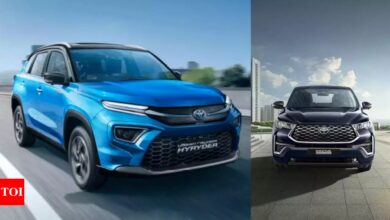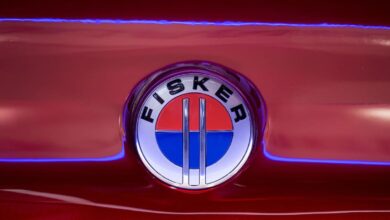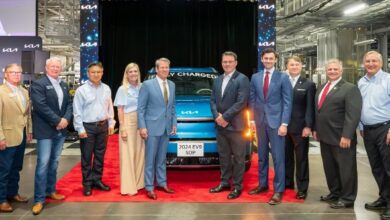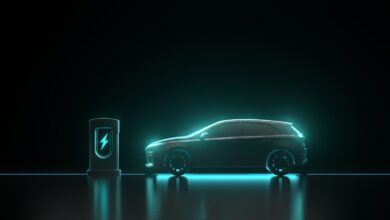Man Does The Math To Brag About EV Road Trip Savings But Finds It Would Be Just As Cheap And A Full Day Quicker In A Hybrid
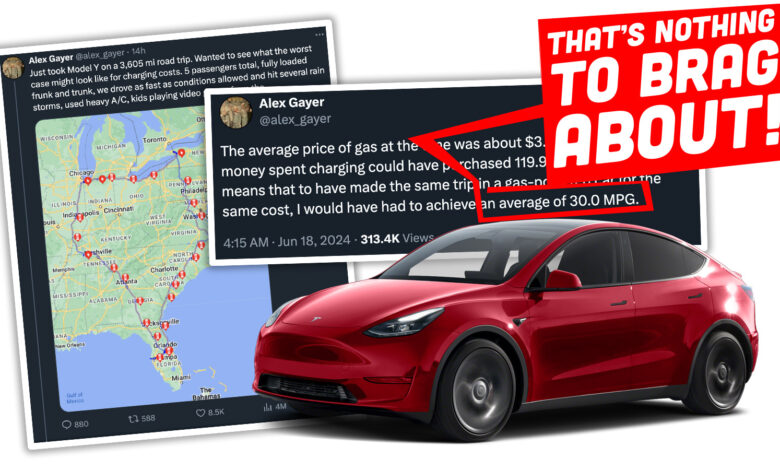
There’s a tweet that is currently going somewhat viral, all about a long road trip taken in a Tesla Model Y. It’s a 3,605 mile road trip, which is absolutely no joke by any standards of a road trip. What’s notable about this trip is that the taker of this trip, Alex Gayer, kept some nicely meticulous records and did some math to figure out how much time was spent charging, how much money was spent, and what the equivalent would be in miles per gallon. One gets the sense that this was all done to brag about his Tesla, which is fine since we don’t kink-shame here, but interestingly, I think the end result of this is not an aggrandizement of Tesla, but actually a pretty solid argument in favor of plug-in hybrids!
As I think we’ve made pretty clear, we’re very pro hybrids, especially plug-in hybrids. They may not be the absolute platonic ideal of perfect efficiency, but they make a lot of sense for the flawed, messy reality we all actually live in. There’s a pragmatic beauty to hybrids. Yes, you’re dragging around two entire types of drivetrains, but the capabilities of those drivetrains dovetail so well with each other, with each one’s strengths filling in the weaknesses of the other – electric motors’ instant torque helping the combustion engine, the reclamation of normally lost kinetic energy from braking, the energy density of gasoline, all of these traits combine to make a system that’s more than the sum of its parts.
![]()
Let’s take a look at this proud Tesla owner’s math and see what we think of all this. First, let’s look at the overall trip:
Just took Model Y on a 3,605 mi road trip. Wanted to see what the worst case might look like for charging costs. 5 passengers total, fully loaded frunk and trunk, we drove as fast as conditions allowed and hit several rain storms, used heavy A/C, kids playing video games from the pic.twitter.com/amcO0lhpbc
— Alex Gayer (@alex_gayer) June 18, 2024
Damn, that’s a long trip! Based on that map, it looks like it took, what, 24 recharging stops? Alex breaks down some of the math for us, helpfully:
Here are my statistics:
Trip Miles: 3,605
Total kWh: 1310.58
Wh/mi: 363.55
Total spent charging: $421.84
Avg. Cost per mile: $0.12
Avg. Cost per kWh: $0.32
Total Time Spent Supercharging: 10 hours 58 minutes (did not include destination charges)— Alex Gayer (@alex_gayer) June 18, 2024
So, we have 3,605 miles, with an average cost per mile of 12 cents, and just under 11 hours of charging time for the trip. Oh, and that doesn’t count “destination charges” which is charging done once they reached their destination for that leg of the journey. The total spent on electrons to feed into those big lithium batteries came to $421.84. Okay, all that seems in order. But it was this next tweet that I really think got everyone wondering:
The average price of gas at the time was about $3.516 per gallon. The money spent charging could have purchased 119.98 gallons of gas. This means that to have made the same trip in a gas-powered car for the same cost, I would have had to achieve an average of 30.0 MPG.
— Alex Gayer (@alex_gayer) June 18, 2024
Okay, so I suspect everyone here is thinking the same thing: 30 mpg? That’s, um, normal? Like, almost anything can hit 30 mpg on the highway now, right? And the way this is phrased – “I would have had to achieve an average of 30.0 MPG” – makes it sound like this is some incredible feat? Big-ass modern SUVs can pull off about 30 MPG now. I just had a press V8 Mustang that was hitting about 30 mpg on the highway recently, too. This isn’t nuclear fusion here.
Okay, so using Alex’ numbers here, let’s figure out what an equivalent trip in a combustion car that gets 30 mpg highway would be like. Let’s say we’re taking an Acura Integra, why not, which gets a combined 30-33 mpg (city 30/highway 37, if you’re curious) and that car has a 12.4 gallon gas tank.
So, the range of that car at a conservative 30 mpg would be 372 miles, so if we divide 3,605 miles by 372 that means we’d have to stop for gas 9.69 times, which we’ll round up to 10 because we probably want more Nutter Butters and Munchos and pee breaks, anyway.
Each tank of 12.4 gallons at $3.516 is $43.60 to fill the tank (completely, which is unlikely, but whatever so that comes to $436.00 for all the gas, a bit more than the electricity, but effectively the same, since it’s unlikely you’ll be draining that tank to bone-dry each time.
Now let’s think about time. Let’s err on the side of slowness and say each fill-up takes 15 minutes, so we have 10 stops, which means 150 minutes, or two and a half hours total. That’s a hell of a lot less than 11 hours. It’s eight and a half hours less, in fact.
And, keep in mind, 30 mpg is just a baseline here – it’s not hard to find all sorts of cars, like Toyota Priuses or Honda Civics or Volkswagen Jettas or Toyota RAV4s or any number of other cars that get well over 30 mpg, 35 and up, even 40 mpg for highway mileage is not uncommon. So the reality is likely to be less fuel needed and less fill-ups than we calculated here.
Of course, people on eX-Twitter pointed out these facts, Alex pointed out that in non-highway use, his Tesla gets well over 30 mpg, often up to an EV equivalent of 90 mpg. And that’s true! But it’s also true that plug-in hybrids can get similar equivalent mpg numbers when running on battery power in-town, and can also take advantage of having a combustion engine that quickly refuels when being used on a long road trip.
If we look at the electric-only ranges of PHEVs, we can see that most of them can cover the average American daily commute distance of 12 miles just on battery power:
- Jeep Wrangler 4xe: 22 miles
- Ford Escape plug-in: 37 miles
- Chrysler Pacifica PHEV: 32 miles
- Jeep Grand Cherokee 4xe: 26 miles
- Hyundai Tucson PHEV: 33 miles
- Mazda CX-90 PHEV: 26 miles
- BMW X5 xDrive50e: 38 miles
- BMW 330e: 23 miles
- Toyota Prius Prime: 44 miles
- Toyota RAV4 Prime: 42 miles
- Lexus RX450h+: 37 miles
Hell, even the worst of these can pull off almost the whole back-and-forth commute without needing to start the combustion motor at all:
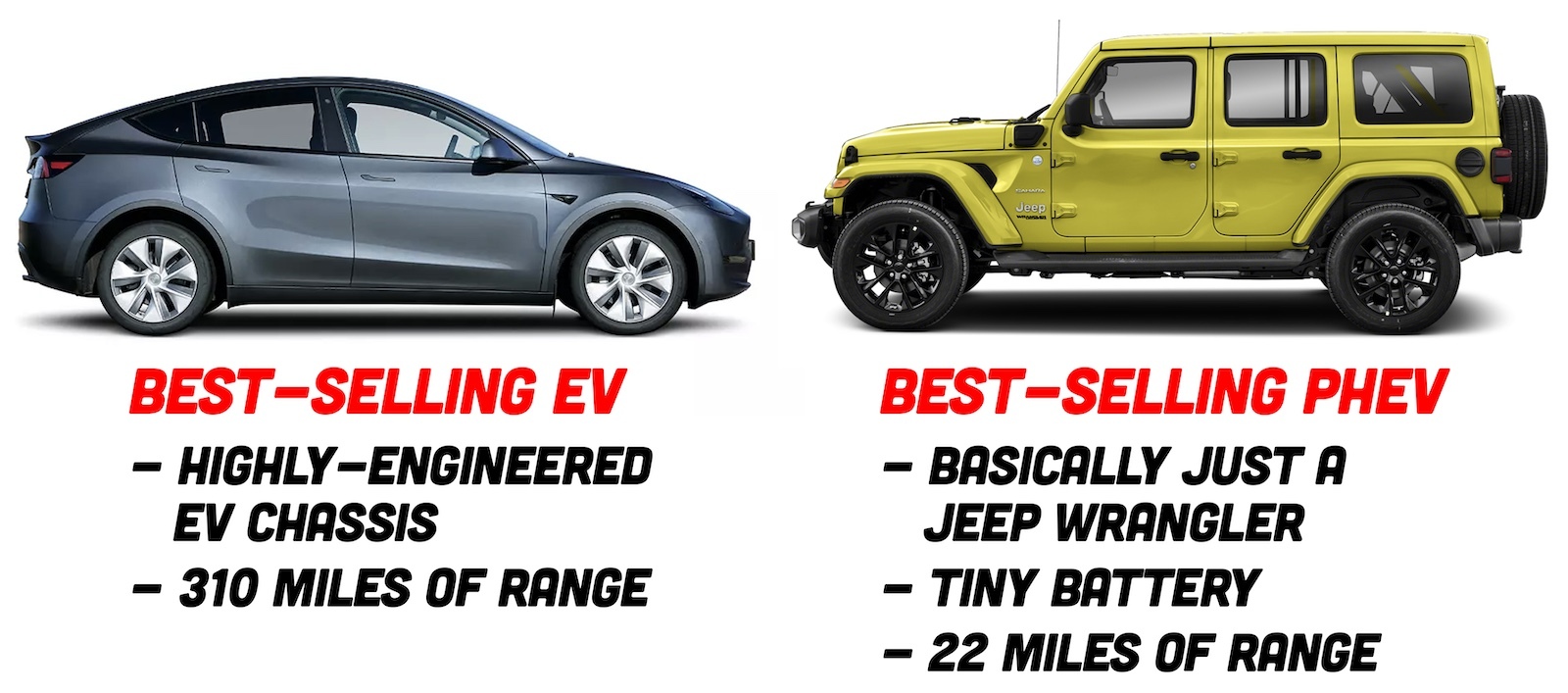
I know Alex Gayer didn’t really intend it to be this way, but I think his carefully-tracked road trip tweets will actually do a lot of good, just not in the everyone-should-get-a-Tesla sense. I think it’ll do good in the we-should-all-seriously-consider-plug-in-hybrids sense. Sure, they’re conceptually a clunky compromise, but in reality, in actual practice, they really do seem to offer the best of both worlds.
Had Alex and his four companions and all their luggage been in a plug-in hybrid, they could have spent the same amount of money and finished their trip an entire eight and a half hours earlier, which perhaps could have spared them seven or so hours of listening to Alex talk about how awesome his Tesla is.
I kid, Alex, I kid! I’m delighted you love your car! We should all be so lucky! But if we’re talking hard numbers, I think this whole thing has been a win for the plug-in hybrids.
I hope you had a fun trip, though!

Ford Is Delaying EV Plans So It Can Build More Hybrids
I Think I Found The Big Flaw In The Otherwise Great Toyota Corolla Cross Hybrid
America Focusing On Electric Cars And Not Plug-In Hybrids Was A Huge Mistake
